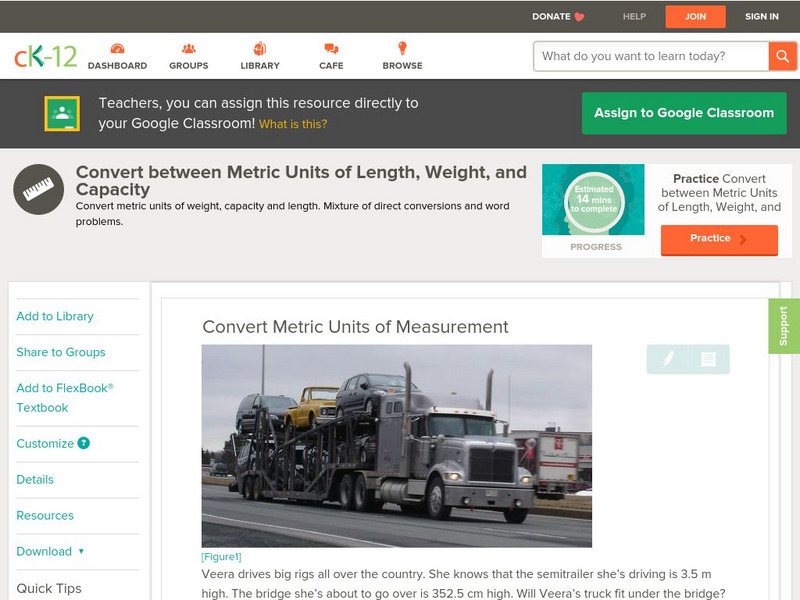Hi, what do you want to do?
ClassFlow
Class Flow: Measure Relationships
[Free Registration/Login Required] The teacher will use this lesson plan flipchart to review length, mass and capacity.
Alabama Learning Exchange
Alex: Weight vs. Capacity
This lesson will introduce students to measuring weight, mass, volume, and capacity using metric and cutomary units. This lesson plan was created by exemplary Alabama Math Teachers through the AMSTI project.
CK-12 Foundation
Ck 12: Measurement: Conversions in Metric Units
[Free Registration/Login may be required to access all resource tools.] Convert metric units of measurement.
Louisiana Department of Education
Louisiana Doe: Louisiana Believes: Eureka Math Parent Guide Unit Conversions & Problem Solving With Metric Measurement
A guide to support parents as they work with their students in unit conversions and problem solving with metric measurement.
CK-12 Foundation
Ck 12: Measurement: Conversions in Metric Units
[Free Registration/Login may be required to access all resource tools.] Convert among metric units of measure using powers of 10.









